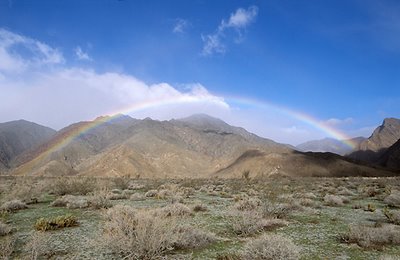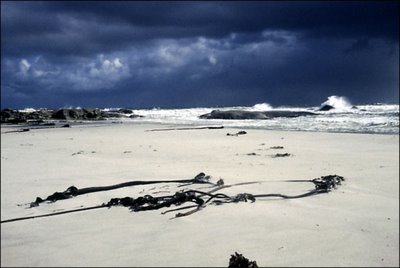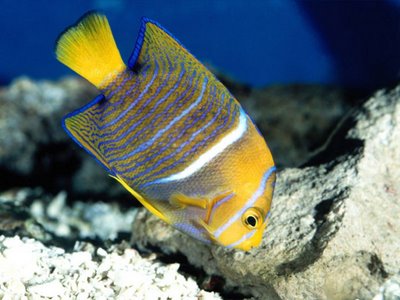‘Man and Nature in the Bible’ around Deuteronomy 20


2. Best Gift
- ‘Spirit of environmental protection’ in Deuteronomy 20 and 22
-June 2001 - suffering from drought in 100 years
Deuteronomy 20: 19~20
Deuteronomy 20: 19 When you lay siege to a city for a long time, fighting against it to capture it, do not destroy its trees by putting an ax to them, because you can eat their fruit. Do not cut them down. Are the trees of the field people, that you should besiege them? 20 However, you may cut down trees that you know are not fruit trees and use them to build siege works until the city at war with you falls.
Deuteronomy 22: 6~7
6 If you come across a bird's nest beside the road, either in a tree or on the ground, and the mother is sitting on the young or on the eggs, do not take the mother with the young. 7 You may take the young, but be sure to let the mother go, so that it may go well with you and you may have a long life.
**If not exact, nature brings about disaster to man in a rather certain cycle.
In agricultural or nomadic society where man relied more absolutely on nature, human experience played more absolute power. That is, the benefaction brought about by nature and the wisdom to confront disasters were not from young peoples’ strength and passion, but from old people who experienced the disasters that had been repeated periodically in 10 years, 30s, 50s,70s... Therefore, agricultural society urgently needed old people’s wisdom.
For that reason, a white-haired old man was an essential being just as he was, a transmitter of wisdom and a teacher.
Our country at the present is in front of a severe disaster of nature.
Heat/chill, drought/flood, snowfall/hail, typhoon/...
Out of these, the most difficult for man to deal with is water.
Drought and flood are still the trouble almost impossible to be solved, even though man has been to Mars and built a space station.
62, 65, 69, 78, 88, 1994, 2001...
These are the numbers of years in which Korea suffered from drought.
Geographically, Korea is supposed to suffer from lack of rain and water in spring and fall. Among others, the above years are those that had extraordinarily severer shortage of water. Especially, the summer of 1978 - in my memory - was extremely hot and droughty, which they said was the first drought in 70 years. Yet far severer, that of 2001 is the drought in 100 years.
Usually, nature brings disaster in cycles of 3, 5, 10, 30, 50, 70, 100,...300, 500, 1000,... Natural disaster is reiterating but has cycles that are not possible for man to deal fundamentally with. As a defensive measure of water shortage, government orders to develop tubular wells with government funds, but developing underground water for agriculture is no more than just a temporary solution.
As there goes a Korean saying, ‘spending like water,’ we thought water was the commonest thing. As time goes on, however, water has been become one of the most precious.
The ground water, which has been being pumped out on mountain farms in the south California of America, is already running out in 50 years.
It means that man uses up the ground water, which has been accumulated for years ten thousands more, within shorter than just 50 years, or within shorter than just 100 years if it should be used for 20~30 more years.
It is the same in Korea.
You might know Bugok hot springs, don’t you? And some of you might have been there.
Among them, the ‘Bugok Hawaii’ used to be a nationwide tourist attraction in the early 80s. In the year 2001 past 20 years since, the ground water under Bugok hot spring was found running dry too much. Now, they have to dig up 350m, or 1148 feet, to pump up the water of hot spring.
The Chojeongni Mineral Spring is not different from that.
Hearing the news of Chojeongni’s high quality water, each and every person has jumped at the spring to draw mineral water for their selling. For that very reason, the water vein underground has been running out too rapidly.
Generally, it is said, the water drawn up 4cm from the water vein underground runs 3cm along the way and 1cm into the soil. The 1cm doesn’t immediately gather to the water vein underground. It takes a lot more time until it becomes the underground water we can use after gathering to the water vein underground.
If water is depleted in 10 or 20 years like the case of Bugok hot springs, our descendants wouldn’t take a hot spring bath in Bogok until 1000, 2000 years or afterward, let alone 100 or 200.
We come to the conclusion that the water existed since much more than 4300 years ago ‘has gone its way into the end in only 30 years’ as our length of history is 4334 in the Tan-gun Era.
The depletion of resources on the earth has already begun.
Just, it is not meant to solve the depletion speed with man’s efforts, but somehow to slower the process.
To watch the ‘ecosystem of wild animals,’ we can see that the grass-eating animals in a certain zone increase rapidly at first in number of the population. But with the increase to a degree, the number of population keeps a certain amount, to be magical. And the carnivorous animals preying on the grass-eating animals also increase or decrease according to population of the grass-eating animals.
With expansion of land in a certain zone, grass-eating animals increase, and flesh-eating animals as well accordingly. With contraction of land in a certain zone, grass-eating animals decrease, and flesh-eating animals, too... In such a way, nature maintains its own system and manages to get along in it.
Like this, either herbivorous or carnivorous animals, or even plants or grasses, maintain the ecosystem in the marvelous order of nature invisible. But if one of them is out of order, different species as well that seemed irrelevant at the beginning would become co-extinct in a few years.
The order of nature is for the sake of one another living together.
However, only man broke the discipline of the ‘order of nature,’ and has stood high in the flowing order.
Nature is flowing like water.
As it were, it is like a big rock over the running water
The first biggest enemy(issue) of the destruction of natural order, or environmental pollution, is ‘overflowing population,’ to begin with.
Despite the biggest problem of the ‘overpopulation,’ each country tries to be evasive. By the time of the 1st World War, the population in the world was a little over 1 billion, as is known. Now, it is over 5 billions, which is 5 times as increased as 100 years ago.
The population of China in 1930~40, where the Mao Tsetung government entered, was 500 millions in statistics. Now it is 5000 millions. It has engaged in the forceful policy of checking an increase in population, with only 1 child a family allowed in urban areas, only 2 children in rural areas. But sociologists surmise, the next generation may have 1600 millions of population in 30 years from now.
This pattern of overpopulation is not just China’s, also the world’s issue.
China has already been suffering from food and water shortage due to its own overflowing population. (Sandy dust phenomenon is also originally the natural disaster that happens because of water shortage.) If it becomes 1600 millions of population in 30 years, then how will it be managed? If only 500 millions out of them leave for Southeast Asia, then how will they be dealt with?
It is the same with Korea.
About 20 millions was the whole population of the Korean peninsular in 1920 when the mentor Namgung Eok distributed young rose-of-Sharon plants, 30 millions at the time of freedom from the Japanese Empire, and nowadays 70 millions North and South Korea together, as they say.
Lately, however, ‘low birthrate’ in advanced countries has loomed as a social issue. South Korea as well has it been socially the biggest issue. But there is now no solution to solve both the contradictory problems of ‘overflowing populations’ and ‘low birthrates’ throughout the whole world.
In the past 100 years, the world population has 3~5 times increased. Among others, Southeast Asia and Africa has it risen tremendously.
Each country’s saying ‘Population is resources and national strength’ is lacking foresight and only looking at their current conditions. ‘Nobody cobwebs in their living mouths,’ and ‘Everybody is born with blessings in their own mouths’ are obsolete sayings, too.
Policy of population was successful in advanced countries including Korea. Still, populations of underdeveloped countries as in Africa and Southeast Asia have been frightfully increasing. Like water and air circle, the men’s movement of residences is inevitable.
Nobody knows how much the population in 30 years may be.
Limited earth, swelling population - ‘its policy of population’ has already failed.
Scripture saying ‘Be full and abundant’ was right for the condition of the contemporary times. It is not non-historical or non-situational.
How much do you think the world population might have been 3000 years or earlier ago? 100~200 millions? And how much of the whole population in Israel?
Our country’s population was 600~900 millions at the early Dynasty of Chosen.
Folks in ancient times, especially folks who lead agricultural or nomadic lives, were more advantageous if they had more members of family. We cannot apply that situation to modern times, or the best industrial information age.
The second biggest destruction of natural order is, underground resources are limited.
The underground water or river that has seemed always there for us is running dry due to having been too much spending.
Although the drought overground is soluble if raining, the drought underground is not soluble if raining. Usually, they say it takes a few thousand years for a water vein to take shape back again.
Petroleum, which we use the most for energy, is an underground resource that was made a few ten million years or much earlier. Made in ten thousands of years at shorter length and in ten or hundred millions or more years at longer length, the underground resources on the earth have been too much spent for man’s ten thousand years of historical age, especially for 200 after the Industrial Revolution, more precisely for just 50 short years after 1950.
It is time we all had serious consciousness of the fact that we have no hereditary resources underground to hand down to the offspring of 50 or 100 years from now.
The third biggest destruction of natural order is, the general life of people including clothes, food and house has changed into the pattern of bringing over-consumption and pollution of resources.
Internationally, the residential environment is changing into apartment.
Two characteristics of apartment are the culture of nuclear family and the residential culture of using a flush toilet, an electric washer, etc. The disadvantage, however, is to use water too much.
Not to mention a flush toilet, an electric washing machine alone uses too much water as compared with washing with hands. Just 30 years ago, there was a saying, ‘Winter clothes takes a week to dry.’ The wet laundry wringed with hands dried slightly for the day and froze for the night. And so it had to go on for days. But since more electric washers and domestic heaters circulated, it dries up in just a day however cold winter may be, if one hangs out the wet clothes in the warm-aired room.
Using an electric washer not only takes more water but also more often times of washing than on former days.
Speaking of housing, a former Korean-style house had to be on moderate finger marks to give out its dim antiqueness. The color of window paper had to be past 2~3 months from renewal in fall so as to be elegant. And Korean oilpaper had to be past a few months from yellow renewal with bean or perilla oil so as to be natural in color.
But, see the things today.
The windowpane of a building looks dirty with only finger prints. You wipe out artificial oilpaper with chemicals if it is on man’s dirt. The Sink bowl and toilet are polished with extra-power detergent. And you use water or oil paint and thinner on the walls and doors. The cans left with paint, the waste materials after construction, and others also pollute the quality of water.
As above, the old houses became more antique and natural with more passing of time, while the modern buildings are inevitably managed with chemicals for the upkeep because of being dirty with passing of time.
All the tings of what we eat, wear and sleep are characteristic of surprisingly accelerating environmental pollution, especially water pollution, compared with the former times. The more advertised articles are to be faster, easier and less burdensome while housewives doing their housework, the more contributive they are to polluting water, which we need to keep in mind.
Like a lecture on environmental pollution, I have told about the environmental pollution so far.
Today’s text, Deuteronomy 20:19~20 and 22:6~7 is what we keep more reminded of and apply, as the environment of the earth gets more polluted and the living condition of man gets more inadequate.
The situation of 20:19~20 is as follows:
The war in ancient times takes 3 months at least, and 3 years at longest.
Even if they win, occupy the castle and move people to the castle, they have to secure food to endure.
In fact, old times they almost self-supported themselves. It took just 1~2 years of reclamation to move people, plow fields and cultivate cereals. But it took 5~6 years for fruit trees to have the first fruits (Leviticus 19:23~25). While there are now improved strains that can have first fruits in even 3~4 years, they took 10~20 years for the trees to have their abundant fruits.
The passage considered: If the fruit trees are chopped out by axes during warfare, then as a result they couldn’t even find the fruits for the following 5~6 years, and they should wait 10~20 years to see them grow enough to be most flourishing.
Magnificent buildings of modern times are usually completed in 3 years. Such as the 63 Building, Daewoo Building, Government Complex, the World Trade Center in USA, Engineer Building, and the Golden Gate Bridge in San Francisco take less than 10 years to be completed, too.
However, the trees have to be usually past 20~30 years to provide the shade of trees and oxygen with right shapes.
It is because the main ones in the wonderful scenery or landscape that can be seen in movies are not the buildings, but the full-grown trees in the background that are over 100~200 years. In our country, since there are few garden trees that are over 100~200 years except for time-honored palaces, the landscape of city looks scanty.
The 22:6~7 means us not to let the seeds of every creature die.
Fishery usually determines the size of a mesh of a net according to what kind of fish to catch. If we catch as far as small fry, it might let us earn more money for a while. In 10 or 20 years, however, the species of fish is endangered until we face a ‘we-both-die situation.’
There is ‘Manchurian trout’ among species of fish in our country.
Many of it were caught 20 years ago. But since we caught even its young fry, they were almost endangered for 5~6 years since the middle of 90s. Now thanks to annually letting loose and protecting the spawn of the small fry that were hatched artificially, it is told they have began to be found little by little.
Now, conclusion.
Human life refers not to today only.
Until knowing there was yesterday, is today and will be tomorrow, one cannot speak of human history.
It is the same with good news and salvation.
It is grace, good news and salvation for us to speak of the past, endure the present and thank for the future that is uncertain but to come.
Traditional Christianity doesn’t say the ‘Rapture’ like the Dami Mission and time-limited eschatology.
Their point in common is to argue for their only personal Rapture. If each of us gets out of my life alone and my salvation alone, then there come the life for us all, the Christ in us and the salvation for humankind. The sacrifice of Jesus was also ultimately for these.
Jesus’ death on the cross brought reconciliation for us. This reconciliation is the event which brought a mutual harmony between God and man, man and man, and man and nature. We cannot speak of the virtuous life of today and cannot hand a healthy body over to the offspring of the future until we receive the broad meaning of reconciliation.
Our life of religion couldn’t be healthy until my life I breathe in and go through is healthy.
To us Christians who are living today, the obligation is left, under which we should let our offspring as well enjoy the benefits nature brings, not only us only.
The text today reminds us, it is indeed finally humans that are the recipients of the benefits from nature when we spare nature and acknowledge the order of nature.
Would you keep in mind, the ‘best gift’ we who are living today can give to future offspring is to leave behind us no other than ‘the environment where there is living nature,’ along with the saying ‘If we lose nature, we lose the earth.’
.
.
.
Welcome visitors to My personal homepage,http://www.mryoum.com/skin_youm_html/eindex.htm about religion / theology / sermon / health and disease / culture / sex.... ‘Continuity of Life’
























